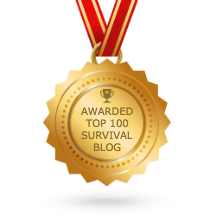Choosing a Safe Location For Your Campfire
Most commercial campgrounds already have preexisting fire rings to use. Unless the fire ring is in a dangerous spot, you should build your fire there. The campground owners have likely already deemed this as a safe location to build a fire. The fire ring will help contain sparks and prevent your fire from spreading.
If your campsite does not have a fire ring, you will need to create one. First find a spot that meets these criteria:
- downwind at least 5 feet away from your tent and firewood
- away from trees, bushes, logs, stumps and overhanging branches
- away from dry grass and forest debris
- away from any other flammable items
If your campsite does have a fire ring already, check if it meets the above criteria too. The landscape around your campsite could have changed since the fire ring was initially built. There might now be a branch that overhangs the current fire ring.
Preparing Your Campfire Area
Once you have chosen where to build your campfire, you need to ensure that the area is completely clear of anything that could ignite. It is best to clear the ground right down to the soil within about 5 feet of your fire pit. Surrounding twigs and dry leaves could easily catch fire from a wayward spark.
Next dig a shallow pit about 2 feet across and encircle this pit with a ring of medium sized rocks. These rocks should be placed snuggly together without any gaps where sparks could fly through. Remove any small, loose stones from the pit that could potentially explode from the fire's heat.
Before you begin building your campfire, make sure you have equipment on hand to extinguish your fire. You will need a large bucket of water and a shovel. Keep these things close enough to your fire pit that they are quickly accessible in an emergency. If the ground around your campsite is too hard to shovel, also keep a bucket of sand or dirt nearby.
Safely Igniting Your Campfire
Avoid using lighter fluid or other chemicals to start your fire. These fuels are dangerous to use in the wilderness. They can unexpectedly flare up and catch your clothing on fire. Instead just use a lighter or match to ignite your kindling. Do not discard any used matches until they are cool to the touch.
It can be tempting to build a large bonfire instead of a reasonably sized campfire. Resist the temptation and put safety first. A large fire will emit more potentially hazardous sparks. These sparks from a large fire are capable to drifting further away than sparks from a small fire. Also it can be much more difficult to extinguish a large fire.
Maintaining a Safe Campfire
While your campfire is burning, never leave it unattended! Despite other safety precautions, your campfire could spread from your fire pit. You need to be around to ensure your campfire doesn't spread.
Be careful of what you burn in your campfire. Try to stick to manageable pieces of firewood that easily fit within your fire pit. It is not a good idea to burn large logs that stick out past your fire pit. Also avoid burning fresh branches that give off excess sparks.
Properly Extinguishing Your Campfire
Before you go to sleep or when you leave the campsite, you must fully extinguish your campfire. First, douse the flames by pouring water on the fire. You are not done yet though. Just because you can't see flames, it does not mean the fire cannot reignite itself. There are usually still hot embers that will continue smoldering for hours. To deal with the embers, stir the coals and add more water. Then cover the coals with dirt or sand.
Conclusion
It is far too easy for a campfire to spread becoming a forest fire. When you are camping, it is your responsibility to protect the forest from your campfire. Follow these simple campfire safety rules and use your common sense. Sometimes it simply is not safe to have a campfire at all. If the forest is too dry and forest fire danger is high, there is often a ban on campfires. Respect these bans as they are for your own safety. Strong winds make for dangerous campfire conditions too. So use your own judgment if necessary. Do what you can to protect our forests.
Check out Taiga Works for a wide variety of camping equipment, including goose down sleeping bags [http://www.taigaworks.ca/html/outdoor-gear/Sleeping-Bags/index.html] and Gore-Tex rain gear [http://www.taigaworks.ca/html/outdoor-gear/Gore-Tex-Clothing/index.html]. Buy quality outdoor gear at discount prices.
Free Solar Book
The Prepper's Pocket Guide: 101 Easy Things You Can Do to Ready Your Home for a Disaster
Ultimate Family Preparedness Pak
120 Serving Breakfast Only @ $198 (120 Servings breakfast assortment. No entrees) - Order Now!





1 comments:
Fantastic article, it’s very comprehensive and exciting! it’s so helpful to me, and your weblog is very good. I am definitely going to share this URL with my friends. Just bookmarked this site.
Post a Comment